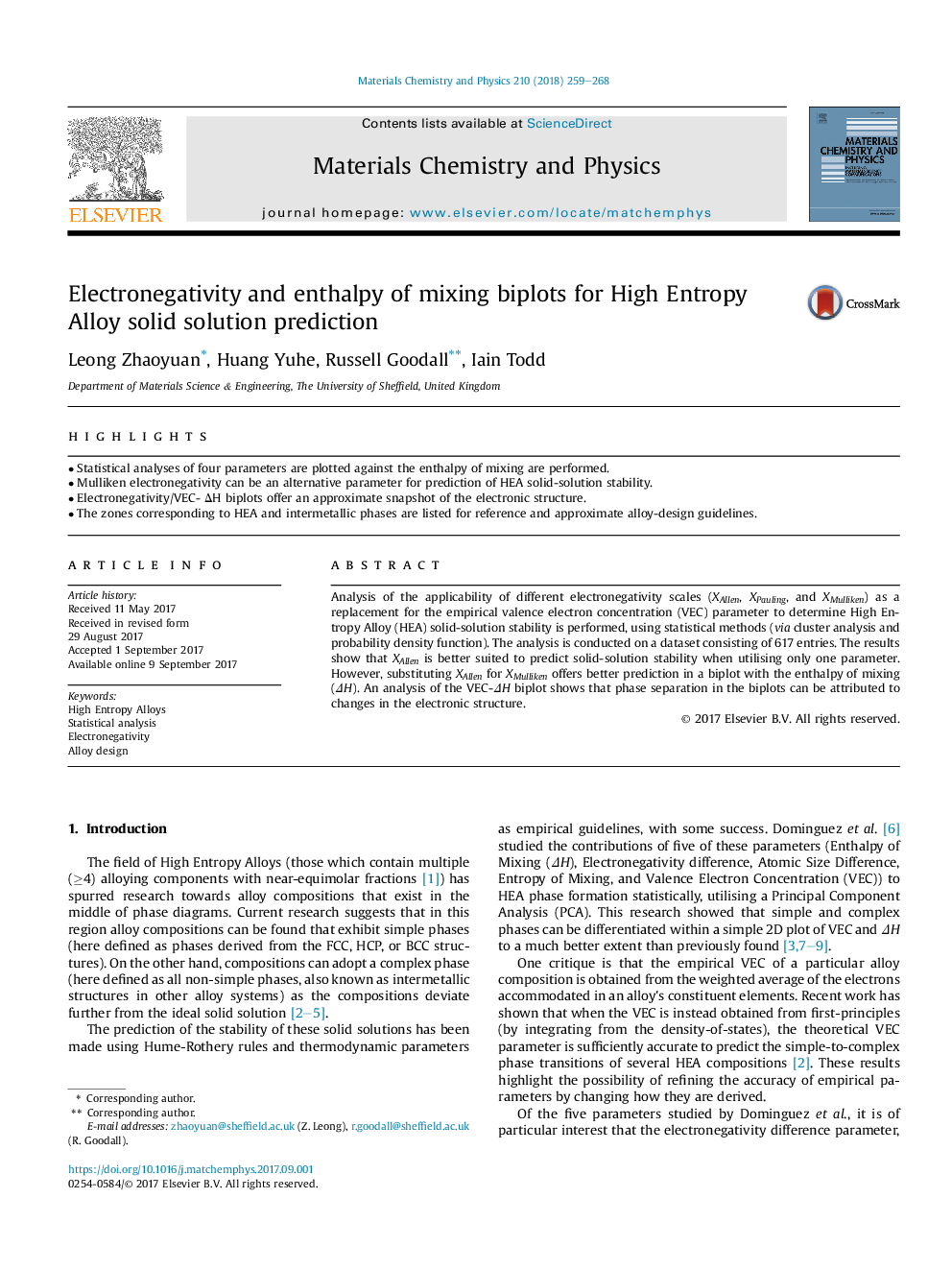| Article ID | Journal | Published Year | Pages | File Type |
|---|---|---|---|---|
| 7921977 | Materials Chemistry and Physics | 2018 | 10 Pages |
Abstract
Analysis of the applicability of different electronegativity scales (XAllen, XPauling, and XMulliken) as a replacement for the empirical valence electron concentration (VEC) parameter to determine High Entropy Alloy (HEA) solid-solution stability is performed, using statistical methods (via cluster analysis and probability density function). The analysis is conducted on a dataset consisting of 617 entries. The results show that XAllen is better suited to predict solid-solution stability when utilising only one parameter. However, substituting XAllen for XMulliken offers better prediction in a biplot with the enthalpy of mixing (ÎH). An analysis of the VEC-ÎH biplot shows that phase separation in the biplots can be attributed to changes in the electronic structure.
Related Topics
Physical Sciences and Engineering
Materials Science
Electronic, Optical and Magnetic Materials
Authors
Leong Zhaoyuan, Huang Yuhe, Russell Goodall, Iain Todd,
